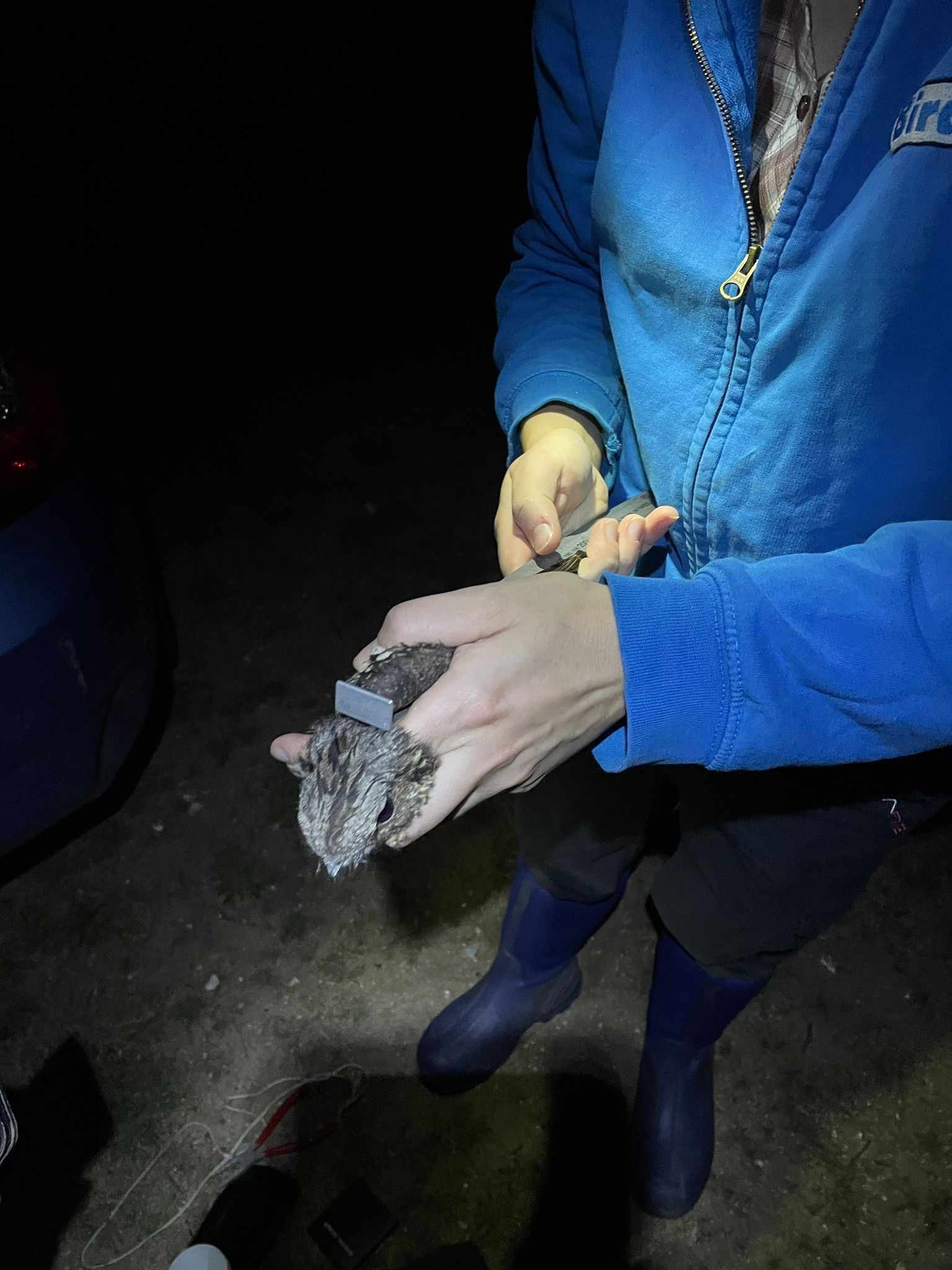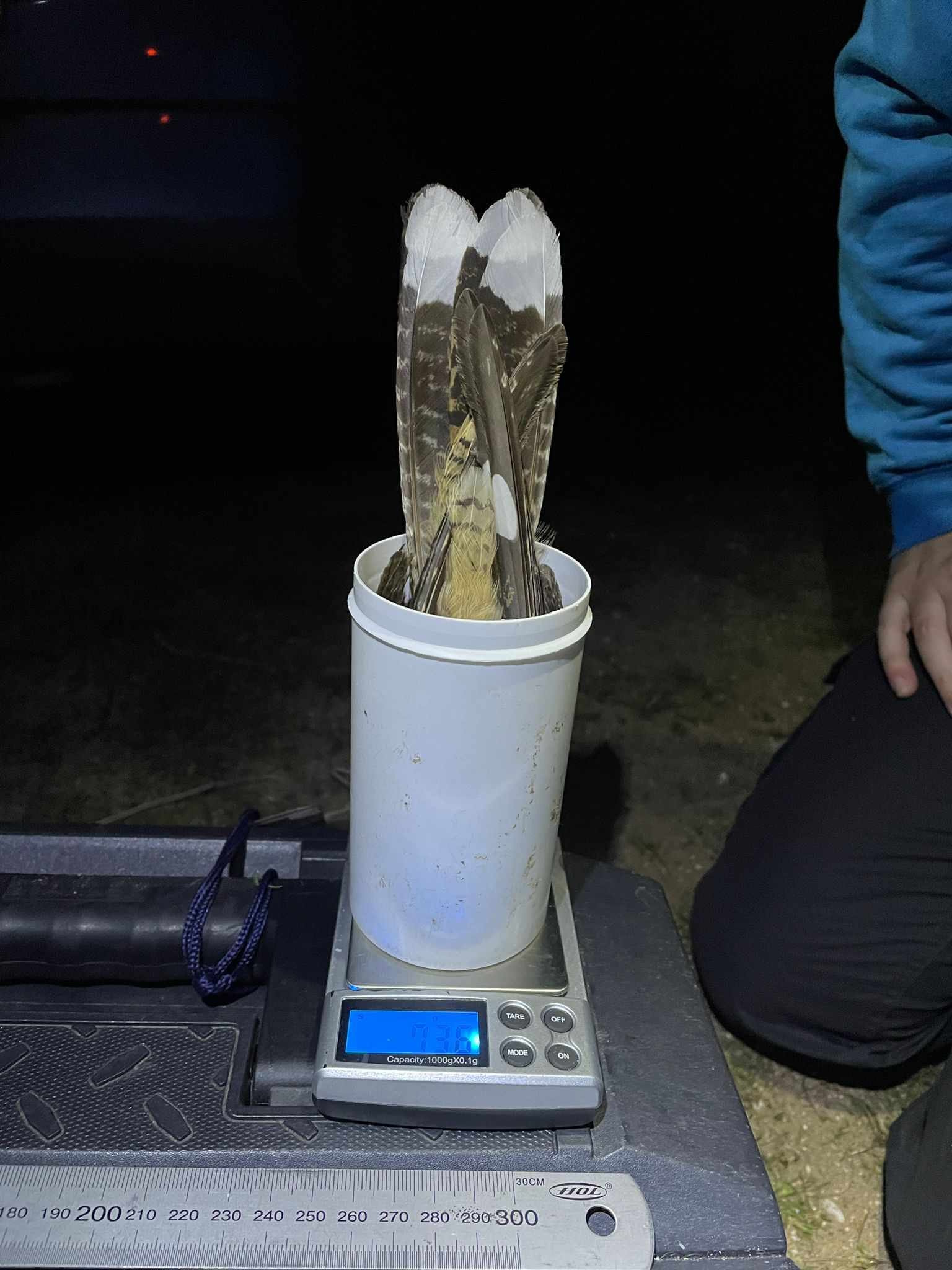Whilst most people look forward to the long days and warm temperatures that come with summer to relax in their garden after work, for our Education Officer the summer holidays means one thing - Nightjars!
Nightjars use their huge eyes to navigate at night
Susan has been helping monitor breeding Nightjars in Thetford Forest for 5 years, working with a team of volunteers to locate nests, recording productivity, as well as ringing adults and juveniles. Nightjars are a very interesting looking migratory bird, arriving here in May and departing in August to spend the winter in Africa. These nocturnal birds are known for their eerie sounding calls and their HUGE mouths, which they use to catch moths and other night flying insects.
This Nightjar was caught with a takeaway moth
Thetford Forest is a stronghold for this species, which uses clear-fell areas to nest on the ground, often relying on their superb camouflage to hide amongst the dead bracken, branches and leaves.
Perfect camouflage
With Jess now progressing with her ringing training, Susan and her partner Dr Hugh Hanmer from the BTO invited her to join them for an evening Nightjarring near Brandon. The team met at the gates and had permission to access the forest tracks. They located a suitable area where Nightjars were known to be active and set two pairs of mist nets in nearby clearings. Upon return to the car, a Nightjar started churring, and was soon joined by at least one other. In addition to the Nightjars, a late flying Hobby was spotted, before it landed in the top of a tall tree to spend the evening!
Once darkness fell, the tapes were switched on. Nightjars are quite territorial and very curious, so will investigate any “imposters” to their patch. Playing a lure attracts them to the nets, but this is all done under licence. After 20 minutes, the first check of the nets resulted in two birds being caught, a female Stonechat and a male Nightjar. Stonechats are a common bycatch as they also use these clear fell areas for feeding and roosting. Susan ringed the Stonechat, which was quickly released to go back to bed!
The Nightjar was already ringed, so Susan went through the process of ageing, sexing and taking biometric measurements while Jess looked on and Hugh wrote it all down. Having internet signal is a luxury not often available in the depths of the forest, but Hugh was able to check the records to confirm our suspicions that this was an older bird (based on the feathers). When Hugh asked Susan to confirm the ring number, they knew something exciting was going to be revealed!
This male Nightjar had last been encountered in 2014, in the same patch of woods, having been ringed the year before as an adult of at least 2 years of age! This means that this bird was at least 12 years old, and at least the second oldest Nightjar to be found in the UK (The oldest has a similar length of time to its record, but was also ringed as an adult, so no definite age!). We can only imagine the stories this bird could tell us, and the miles it has flown migrating to Africa and back every year!
This old boy is at least 12 years old!
The following week, Jess joined the team for what would be the last session of the season. This time, they visited Elveden heath, where Nightjars spend the last week or so fattening up before starting their migration. This session had a background noise of Jets from RAF Lakenheath and Stone Curlews.
The view over Brandon heath as the sun goes down
In total, the team caught seven Nightjars, which gave Jess the opportunity to ring some under the guidance of Hugh and fellow ringing trainer Graham. Jess ringed two juvenile Nightjars, while one of the birds already wearing a ring had been ringed by Hugh the previous year as a chick at the nest a couple of miles away!
Jess ringing her first Nightjar, a juvenile
Discussing the age of the bird by looking at the wing feathers.









